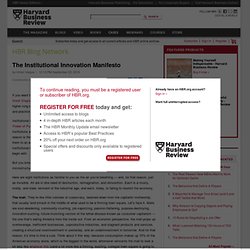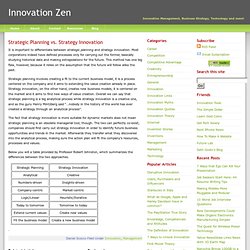

2012 IRI R&D Trends Forecast. Author Guidelines. Research-Technology Management accepts only electronic manuscripts, submitted via our Editorial Manager submission management system at www.editorialmanager.com/rtm. If the manuscript has been published elsewhere, or is currently under consideration by another publication, this should be made clear in the cover material. Please note that as a rule we do not reprint previously published materials. RTM articles include several components: 1. Authors’ names and short bios (50–100 words) 2. Your main manuscript file should include only the last two items in the list. All submissions must conform to the following technical requirements: Manuscript should be submitted in .DOC, .DOCX, or .RTF format.
Manuscripts that do not conform to these initial technical requirements will be returned unread. A Brief Style Guide RTM’s house style is based on the Chicago Manual of Style, 16th ed. HeadingsPlease use headings to provide readers with guideposts through your paper. BooksChristensen, C. Innovation and commercialization – 2010 McKinsey Global Survey results. Last week McKinsey released their 2010 innovation survey.

It makes a very interesting read and is based on a survey of over 2000 respondents from several industries. In the report only 39 percent of respondents say that their companies are good at commercializing new products or services. Commercialization was a serious concern also in 2007; in that year’s survey, nearly a third of senior leaders selected making handoffs from ideas to commercialization as one of their biggest challenges. And 43 percent said the top challenges included choosing which ideas to move forward.
According to the report a big part of the problem may be the absence of a formal decision-making process: 40 percent of respondents say their companies make commercialization decisions in an ad hoc manner; only 23 percent say such decisions are a regular agenda topic at corporate-leadership meetings. The report shows that after coping with the global economic crisis, companies are beginning to aim for growth again. The Institutional Innovation Manifesto - Umair Haque. If you want to be a 21st century company (or economy), if you want to survive and thrive during this Great Stagnation, you’ve got to to have the courage, foresight, and determination to step up to a higher rung on the ladder of innovation.

It’s time to master what I sometimes call “I-squared”: the art and practice of institutional innovation. Institutional innovation (magnificently discussed in John Hagel and JSB’s shudderingly awesome Power of Pull) is an arduous, difficult, and frustrating challenge for most — because, all too often, institutions are a little bit like art: the more you try and define them, the more elusive they get.
The reason is that they’re culturally bound, socially specific, and, above all, messily human, so reducing them to an entry in Wikipedia is bound to result in disaster. So many can’t get to grips with institutional innovation because, well, they often can’t figure out the blazes the fuss is all about to begin with. The Institutional Innovation Manifesto - Umair Haque. Strategic Planning vs. Strategy Innovation. It is important to differentiate between strategic planning and strategy innovation.

Most corporations indeed have defined processes only for carrying out the former, basically studying historical data and making extrapolations for the future. This method has one big flaw, however, because it relies on the assumption that the future will follow alike the past. Strategic planning involves creating a fit to the current business model, it is a process centered on the company and it aims to extending the value creation already in place. Strategy innovation, on the other hand, creates new business models, it is centered on the market and it aims to find new ways of value creation. Overall we can say that strategic planning is a big analytical process while strategy innovation is a creative one, and as the guru Henry Mintzberg said “…nobody in the history of the world has ever created a strategy through an analytical process”.
How Not to Manage Innovation - Umair Haque. Welcome to the zombieconomy — where things happen backwards.

Case in point: today’s best example of how not to manage innovation comes from those who should be masters of radical innovation: venture investors. The venture industry is in crisis because of an ongoing inability to grow and nurture meaningful innovation. I’ve come across many examples recently — a tweet from an investor asking “where is Twitter’s ROI?” , or sessions I’ve run where investors have focused on business models, while failing to build a fuller strategic understanding. Let’s use Jeremy Liew’s recent analysis — a fun read — of Apple’s iPhone Apps Store to outline how not to manage innovation. Focus on short-run numbers. The point? Apply surface economics. The point? Be strategy-blind. The point?